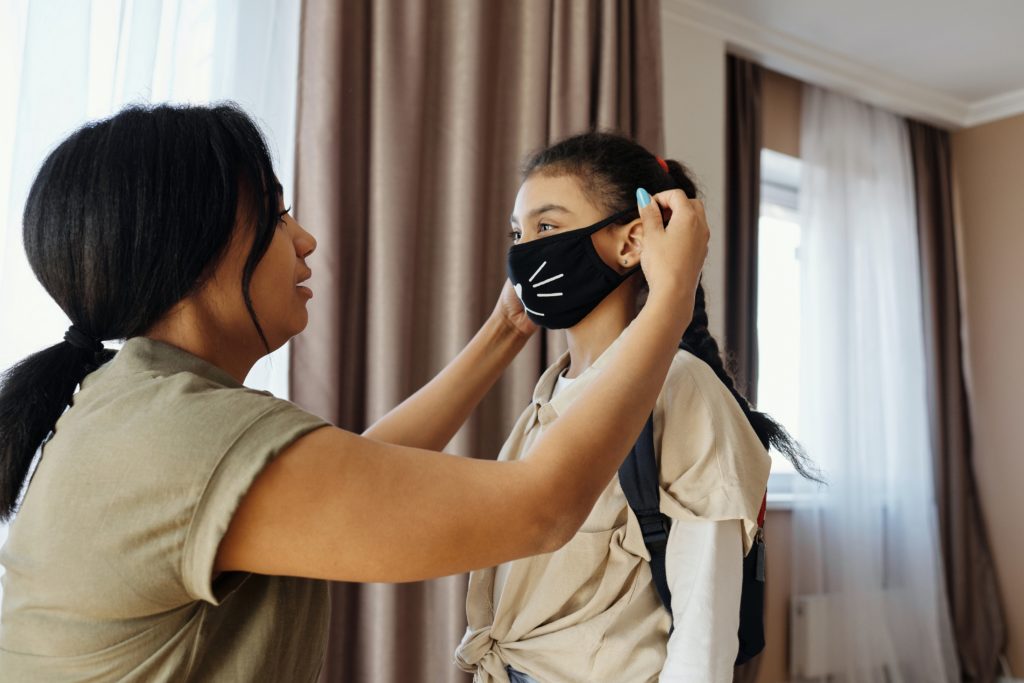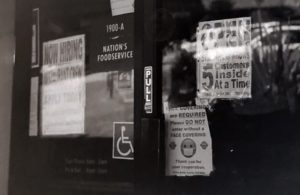
by Juliet Lucas, a Member of the Emerging Leaders’ Council
August, 2019: My sister and her five enthusiastic friends beg me to take them out to the trampoline park. We pile into my mom’s 7-seater and I (sort of) keep an eye on my sister’s crew as they challenge middle-school boys to dodgeball and gossip about the older kids doing tricks on the foam pit.
August, 2021: My sister experiences crushing social anxiety on her first day of high school; over a year of online classes and isolation causing her to forget what learning alongside other people her age means.
We all know that the lockdown conditions of COVID-19 have been hard. Jobs shifted online, restaurants closed down or were severely restricted, schools are just now recovering with mask mandates in place, and small businesses are struggling.
However, it may be the younger generations that are hardest hit. At a time when teens were meant to be discovering social life outside of their families, they were forced into isolation with little contact with the outside world. This isolation left its mark: Suicidal ideation in teens was 1.60 and 1.45 times higher in Spring 2020 then 2019[1]. Emergency room visits for suicide attempts among teen girls rose by 26% in the summer of 2020, and were up 50% by the winter of 2021[2]. Proms were canceled, college freshman year happened on Zoom, and rates of Depression skyrocketed.[3]. Many teens, my sister included, will carry scars from this time with them for the rest of their lives.

As a college student, my life was also deeply affected. My first semester at a new school was conducted completely online. Only in the Fall of 2021 have I have been allowed to move onto campus. Still, socialization and visiting is limited — and the mask mandate extends across the campus, into classrooms and even dorm rooms. Even with all the progress our government claims we have made to crushing the virus, normal life is still not so normal. “Two weeks to flatten the curve” became a major, ongoing event for so many young people. More than 18 months later, we’re still struggling.
This experience doesn’t just affect high school seniors and first year college students. The increased social anxiety in all age groups have made it harder to go back to “normal” living[4] across the board. Life skills necessary for success — in careers and relationships — have been absent, and that’s going to affect young people for a long time.
Screens and media have kept us active and entertained, but to what end? Our already internet-active lives saw a 50-70% increase under COVID quarantines[5]. Children have made friends with screens — and the idea of going back to flesh and blood friendships can be intimidating.

In March of 2020, my foreign-exchange student friend from France told me of lockdowns in Paris. Similar patterns followed here in the United States. When he first warned that was possible, I laughed. Maybe France was okay with that, I thought, but there was no way Americans would submit to such demands.
And yet, we did. We did it all for a virus, that for children, has a 99.98% survival rate[6]. Now here we are, facing a 2022 that is still reeling with restrictions and mandates. We are still facing restrictions we were promised would be lifted in two weeks. We were told that once the curve was flattened, we’d be free. Then, we hard that once the vaccine was out, things would be better. But these things haven’t happened and the government is squeezing every bit of power they have out of this pandemic.
Normal life may eventually return. But, the children of this generation will remember this as a traumatic time. They will have to work harder in developing socially and the long-term effects of how education was conducted are yet to be seen. It’s time to end the hysteria and stop creating the lasting scars so many already have.
[1] Korioth, Trisha. “Study: Suicidal Behavior in YOUTHS Higher During Covid-19 Closures than in 2019.” American Academy of Pediatrics.
[2] “Big Rise in Suicide Attempts by U.S. Teen Girls During Pandemic.” U.S. News & World Report.
[3] Mayne, Stephanie L., et al. “COVID-19 and ADOLESCENT Depression and Suicide Risk Screening Outcomes.” American Academy of Pediatrics.
[4] Goodman, Brenda. “Life after Covid: A Long Road to Recovery.” WebMD.
[5] Pandya, Apurvakumar, and Pragya Lodha. “Social Connectedness, Excessive Screen Time During COVID-19 and Mental Health: A Review of Current Evidence.” Frontiers.
[6] Elflein, John. “U.S. COVID-19 Case FATALITY by Age.” Statista.

